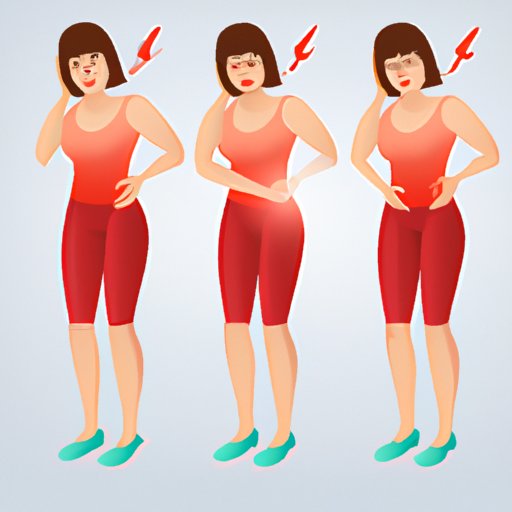
I. Introduction
Myopathy is a muscle disorder that affects people of all ages, from children to the elderly. This condition can cause a range of symptoms that can significantly impact a person’s daily life, making it important to recognize and understand the signs of myopathy. In this article, we’ll explore the symptoms of myopathy, including age-specific variations, and discuss how this condition is diagnosed and treated.
II. Understanding Myopathy
Myopathy is a muscle disorder that affects the way muscles function. There are several different types of myopathy, each with its own causes and symptoms. Some types of myopathy are genetic, while others are acquired due to medical conditions or exposure to certain medications or toxins.
In general, myopathy causes muscle weakness, as well as other physical symptoms like fatigue, cramping, and stiffness. In more severe cases, myopathy can also affect breathing, swallowing, and speaking.
III. Common Symptoms of Myopathy
Here are some of the most common symptoms seen in individuals with myopathy:
- Muscle weakness
- Fatigue
- Cramping
- Stiffness
- Pain and tenderness in the muscles
- Difficulty walking or standing
- Difficulty gripping objects
- Difficulty rising from a seated position
- Difficulty with fine motor skills
- Drooping eyelids
- Double vision
- Difficulty breathing
- Difficulty swallowing
- Difficulty speaking
It’s important to note that the severity of these symptoms can vary widely depending on the type and severity of myopathy a person has. Additionally, not all individuals with myopathy will experience every symptom on this list.
IV. Age-Specific Symptoms
Myopathy can affect people of all ages, and the symptoms may vary depending on a person’s age. Here are a few examples:
- Children: Children with myopathy may experience delayed motor development, muscle weakness, and difficulty walking or running. They may also have trouble climbing stairs or participating in physical activities.
- Adults: In adults, myopathy may cause muscle weakness, difficulty with fine motor skills, and muscle pain. It may also lead to difficulty swallowing and breathing.
- Elderly: Older adults with myopathy may experience muscle weakness and difficulty rising from a seated position. They may also have trouble with tasks that require fine motor skills, such as buttoning a shirt or tying shoelaces.
It’s worth noting that these are just a few examples of age-specific symptoms, and that the symptoms can overlap and vary widely between individuals.
V. Diagnosis of Myopathy
If you’re experiencing symptoms of myopathy, it’s important to see a doctor for an accurate diagnosis. The diagnostic process for myopathy typically includes:
- A physical exam to assess muscle weakness, range of motion, and other symptoms
- Imaging tests like MRIs and CT scans to help identify any muscle damage or abnormalities
- Lab tests to assess muscle function and look for any underlying medical conditions
Once a diagnosis of myopathy has been confirmed, your doctor may recommend additional tests to help identify the specific type of myopathy you have.
VI. Q&A on Myopathy Symptoms
What causes myopathy symptoms?
Myopathy symptoms can be caused by a range of factors, including genetic mutations, autoimmune disorders, infections, exposure to toxins, and reactions to medications. In some cases, the cause of myopathy may be unknown.
How are myopathy symptoms treated?
The treatment for myopathy depends on the underlying cause and the severity of the symptoms. In some cases, lifestyle changes like exercise and physical therapy may help improve muscle function and reduce symptoms. Medications like corticosteroids and immunosuppressants may also be prescribed to help control inflammation and slow the progression of myopathy. In severe cases, surgery or other interventions may be necessary to address muscle weakness and other symptoms.
What is the prognosis for individuals with myopathy?
The prognosis for myopathy varies widely depending on the type and severity of the condition. In some cases, myopathy can cause serious disability and even death. However, with appropriate treatment and management, many individuals with myopathy are able to live full and active lives.
VII. Conclusion
Myopathy is a muscle disorder that can cause a range of symptoms, from muscle weakness and fatigue to difficulty breathing and swallowing. While the specific symptoms and severity of myopathy can vary from person to person, it’s important to recognize the signs of this condition and seek appropriate medical attention. By working with your doctor to get an accurate diagnosis and develop a personalized treatment plan, you can manage your symptoms and improve your quality of life.





